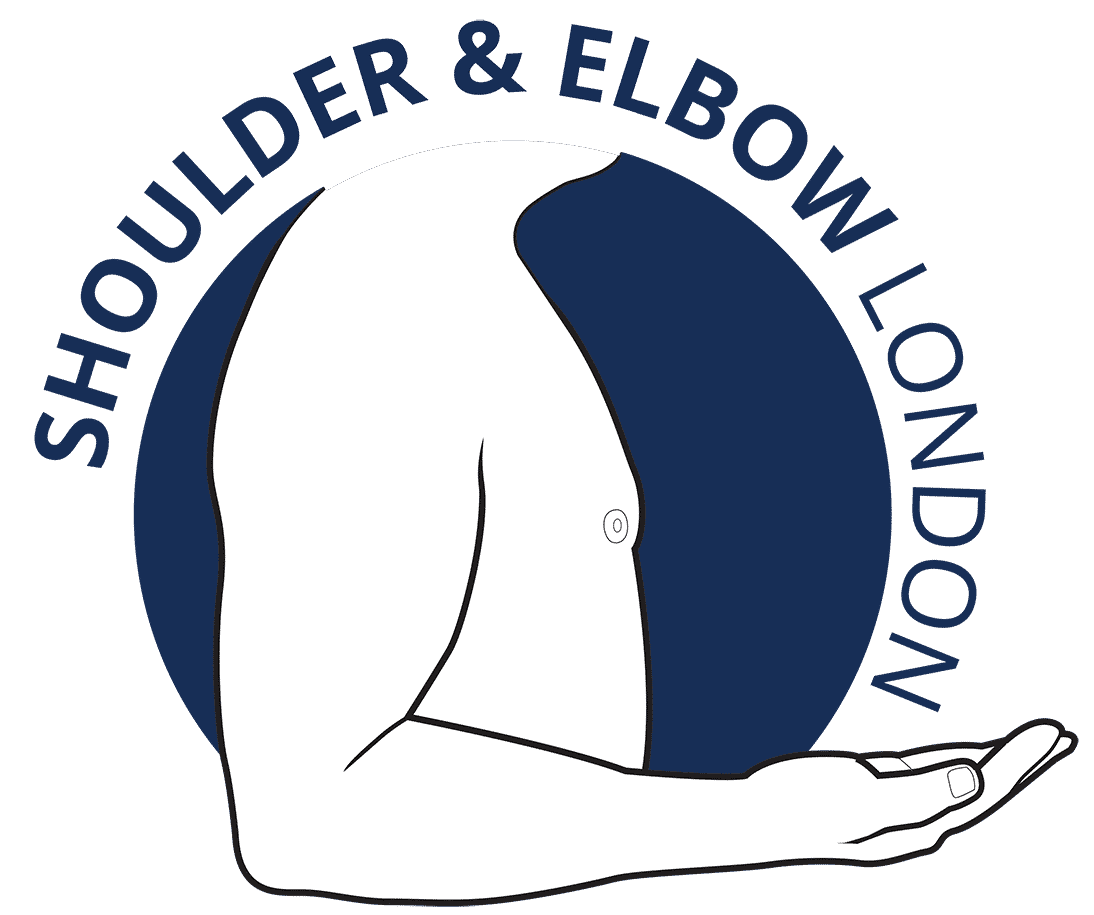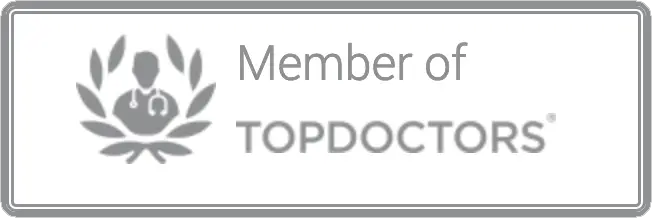
SHOULDER & ELBOW GLOSSARY
Please see below some medical terms I commonly use and their descriptions. If there is a term you cannot find please email me and we will add it to this page.
A
Abduction of shoulder – movement of the arm out to the side away from the body
Acromioclavicular joint (ACJ) – small joint at the top of the shoulder between the acromion and the clavicle.
Acromion – a projection of bone from the shoulder blade which you can feel as the flat bit of bone at the top of the shoulder.
Active Exercise – exercise for rehabilitation where the muscles of the affected limb are used to do the movement.
Adduction of shoulder – movement of the arm toward the center of the body.
Adhesive capsulitis – another term for frozen shoulder. A condition which causes pain and stiffness due to inflammation of the shoulder capsule.
Anatomical Shoulder Replacement – a form of shoulder replacement where the basic anatomy of the join is maintained ie: the ball is replaced with a metal ball and the socket is replaced with a plastic socket.
Arthritis – destruction of the cartilage of a joint resulting in pain and loss of movement. This may have several causes.
Arthroplasty – another term for joint replacement
Arthroscopy – keyhole surgery involving a joint such as the shoulder or elbow
Atraumatic shoulder instability – instability of the shoulder that is not caused by trauma or injury. This is usually a result of stretchy tissues or abnormally behaving shoulder muscles. Read more here.
B
Bankhart tear – a tear of the labrum of the shoulder joint due to a traumatic shoulder dislocation. This can cause ligament laxity in the joint and recurrent dislocations.
Beighton score – a test used to determine if a patient’s tissues are generally more elastic. See video here.
Biceps tendon – the biceps muscle has 3 tendons: at the elbow there is the distal biceps tendon, at the shoulder there is the long head of biceps (LHB) tendon which passes inside the shoulder joint and the short head of biceps tendon that attaches to the tip of the coracoid outside the shoulder joint.
Biceps tenodesis – an LHB tenodesis is an operation to cut the long head of biceps tendon (LHB) and reattach it to its groove on the humerus.
Bursitis – inflammation of any bursa in the body such as olecranon bursitis and subacromial bursitis.
C
Capsule – the lining of a joint which contains cells that produce joint fluid.
Capsulitis – inflammation of the capsule of a joint.
Cervical radiculopathy – pain caused by irritation or compression of the nerves as they exit the cervical spine in the neck. The pain typically radiates down the arm but can radiate to the neck and face. Read more here.
Clavicle – collarbone and one of the most commonly fractured bones in the upper limb. Read more about clavicle fractures here.
Collateral ligaments of the elbow – ligaments on the inside and outside of the elbow that provide stability to the elbow.
Coracoid – a projection of bone off the shoulder blade and points forward near to the shoulder joint and is the attachments for several ligaments and tendons.
Cuff tear arthropathy – degeneration of the shoulder joint caused by chronic rotator cuff tears.
D
Deltoid – large muscle on the outside of the shoulder that gives shoulders their round shape.
Dermatomes – regions of the body where we map out sensation of nerve roots which exit the spine.
E
Extension of elbow – the motion of straightening the elbow.
External rotation of the shoulder – turning of the arm so that the forearm rotates away from the body.
F
Flexion of elbow – the movement of bending the elbow.
Forward flexion of shoulder – the movement of lifting the arm forward away from the body.
Fracture – a break in a bone.
Frozen shoulder – a painful condition of the shoulder also called adhesive capsulitis that results in pain and stiffness. Read more about frozen shoulder here.
G
Glenohumeral joint – the ball and socket joint of the shoulder between the humerus (arm bone) and glenoid (shoulder socket).
Glenoid – the socket of the shoulder which is part of the shoulder blade.
H
Humerus – the arm bone which forms the shoulder joint at its upper end and the elbow joint its the lower end.
I
Inflammatory arthritis – arthritis caused by inflammatory conditions such as rheumatoid arthritis, gout, psoriasis.
Infraspinatus – one of the rotator cuff muscles at the back of the shoulder that is responsible for external rotation of the shoulder.
Internal rotation – the movement of turning the arm so that the forearm rotates towards the body.
J
K
L
Lateral – towards the outside of the body.
Laterjet stabilisation – an operation to treat traumatic shoulder dislocations where the coracoid bone is cut and moved and attached to the front of the glenoid.
Ligament – a structure that connects two bones and provides stability to joints.
Long Head of Biceps (LHB) – one of the tendons at the upper end of the biceps muscle that passes along a groove in the top of the humerus and attaches to the top of the glenoid inside the shoulder joint. You can read more about LHB tendon problems here.
M
Medial – toward the inside of the body.
N
Nerve Conduction Studies (NCS) – this is a test using electrodes and sensors to assess nerve function but passing small currents through a nerve.
O
O’Briens Test – this is a clinical test for problems with the long head of biceps (LHB) tendon. See a video of the test here.
Olecranon – the bony tip of the elbow that forms part of the ulna bone.
Osteoarthritis – destruction of the cartilage of a joint due to degeneration and wear and tear.
Osteolysis – a stress response of bone to repetitive trauma which causes resorption of the bone. In the upper limb this can typically affect the collarbone with a condition called distal clavicle osteolysis.
P
Passive exercises – exercises for rehabilitation where the muscles of the affected limb are rested and the limb is moved either by the patients using their other arm, or by the therapist.
Posterior – behind.
Pronation of the forearm – the movement of rotating the forearm and wrist so that the palm of the hand faces downward.
Prosthesis – this is another term for a joint replacement implant.
Q
R
Radial Head – the round part of the upper end of the radius bone that forms part of the elbow joint and is responsible for pronation and supination of the forearm.
Radial Head Replacement – a partial joint replacement of the elbow that replaces only the radial head with metal leaving the rest of the elbow joint intact.
Reverse Shoulder Replacement – a type of shoulder replacement where the anatomy of the shoulder joint is reversed so that the ball is replaced with a plastic socket and the socket is replaced with a metal ball. Find out more here.
Rotator Cuff – a group of 4 small muscles that in balance control the movements of the shoulder joint.
S
Scapula – shoulder blade.
Scarf test – a test for acromioclavicular joint (ACJ) problems. See a video of how the test is performed here.
SLAP Tear – a traumatic or degenerative tear of the attachment of the long head of biceps tendon (LHB) at the top of the glenoid. You can read more about SLAP tears here.
Subacromial bursa – the bursa at the top of the shoulder joint between the supraspinatus muscle below and the acromion above. This bursa can get inflammed causing shoulder bursitis.
Subscapularis – large rotator cuff muscle at the front of the shoulder responsible for internal rotation of the shoulder.
Supination of the forearm – the movement of rotating the forearm so that the palm faces downward.
Supraspinatus – rotator cuff muscle at the top of the shoulder that is responsible for shoulder abduction and can contribute subacromial shoulder pain and can be involved in rotator cuff tears.
T
U
V
W
X
Y
Z
Nick Ferran @ Shoulder & Elbow London Ltd
Clinics in:
Chiswick – Harrow – St. Johns Wood
As an Amazon Associate, I earn from qualifying purchases.




